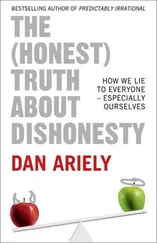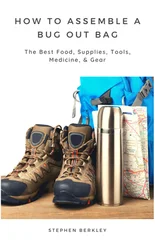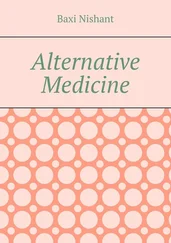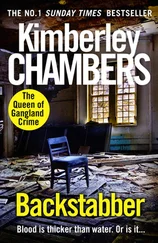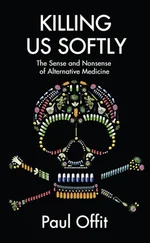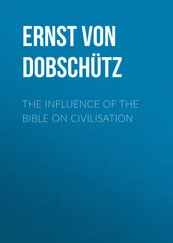In hindsight, we can see that those who argued for caution were probably correct. It now seems highly likely that many of the Chinese demonstrations involving surgery had been faked, inasmuch as the acupuncture was being supplemented by local anaesthetics, sedatives or other means of pain control. Indeed, it is a deception that has occurred as recently as 2006, when the BBC TV series Alternative Medicine generated national interest after showing an operation that was almost identical to the one observed by Dr Rosenfeld three decades earlier. Again, acupuncture was being used on a female patient in her twenties, also undergoing open‑heart surgery, and also in Shanghai.
The BBC’s presenter explained that: ‘She’s still conscious, because instead of a general anaesthetic this twenty‑first‑century surgical team are using a two‑thousand‑year‑old method of controlling pain–acupuncture.’ British journalists and the general public were amazed by the extraordinary images, but a report by the Royal College of Anaesthetists cast the operation in a different light:
It is obvious, from her appearance, that the patient has already received sedative drugs and I am informed that these comprised midazolam, droperidol and fentanyl. The doses used were small, but these types of drugs ‘amplify’ the effect of each other so that the effect becomes greater. Fentanyl is not actually a sedative drug in the strict sense, but it is a pain‑killing drug that is considerably more powerful than morphine. The third component of the anaesthetic is seen on the tape as well, and that is the infiltration of quite large volumes of local anaesthetic into the tissues on the front of the chest where the surgical incision is made.
In short, the patient had received sufficiently large doses of conventional drugs to mean that the acupuncture needles were a red herring, probably playing nothing more than a cosmetic or psychological role.
The American physicians who visited China in the early 1970s were not accustomed to deception or political manipulation, so it took a couple of years before their naïve zeal for acupuncture turned to doubt. Eventually, by the mid‑1970s, it had become clear to many of them that the use of acupuncture as a surgical anaesthetic in China had to be treated with scepticism. Films of impressive medical procedures made by the Shanghai Film Studio, which had once been shown in American medical schools, were reinterpreted as propaganda. Meanwhile, the Chinese authorities continued to make outrageous claims for acupuncture, publishing brochures that contained assertions such as: ‘Deep needling of the yamen point enables deaf‑mutes to hear and speak…And when the devil was cast out, the dumb spake: and the multitudes marvelled.’
Acupuncture’s reputation in the West had risen and fallen in less than a decade. It had been praised unreservedly following President Nixon’s visit to China, only later to be treated with suspicion by the medical establishment. This did not mean, however, that Western physicians were necessarily close‑minded to the whole notion of acupuncture. The more extraordinary claims might have been unjustified, but perhaps many of the other supposed benefits were genuine. The only way to find out would be for acupuncture to pass through the same protocols that would be required of any new treatment. The situation was best summarized by the American Society of Anesthesiologists, who issued a statement in 1973 that highlighted the need for caution, while also offering a way forward:
The safety of American medicine has been built on the scientific evaluation of each technique before it becomes a widely accepted concept in medical practice. The premature use of acupuncture in the United States at this time departs from this traditional approach. A potentially valuable technique which has been developed over thousands of years in China is being hastily applied with little thought to safeguards or hazards. Among the potential hazards is the application to the patient who has not been properly evaluated psychologically. If acupuncture is applied indiscriminately, severe mental trauma could result in certain patients. Another hazard is the possible misuse by quacks in attempting to treat a variety of illnesses, including cancer and arthritis, thus diverting the patient from obtaining established medical therapy. Exploitation may delude the public into believing that acupuncture is good for whatever ails you. Acupuncture may indeed have considerable merit and may eventually find an important role in American medicine. That role can only be determined by objective evaluation over a period of years.
The American Society of Anesthesiologists, therefore, was neither accepting nor rejecting the use of acupuncture, but instead it was simply arguing for rigorous testing. These level‑headed experts were not interested in anecdotes, but rather they wanted ‘objective evaluation’ with large numbers of patients. In other words, they wanted to see acupuncture submitted to the sort of clinical trials discussed in Chapter 1, which had decided the effectiveness of treatments such as bloodletting and lemon juice for scurvy. Perhaps acupuncture would turn out to be as useless as bloodletting, or perhaps it would be as effective as lemons. There was only one way to find out: do proper research.
During the 1970s universities and hospitals across America began submitting acupuncture to clinical trials, all part of a massive effort to test its impact on a variety of ailments. Some of the trials involved just a handful of patients, whereas others involved dozens. Some tracked the impact of acupuncture in the hours immediately following a one‑off treatment, while others looked at long‑term treatments and monitored the progress of patients over several weeks or even months. The diseases studied ranged from lower back pain to angina, from migraine to arthritis. Despite the wide variety of clinical trials, they broadly followed the principles that had been laid down by James Lind: take patients with a particular condition, randomly assign them either to an acupuncture group or to a control group, and see if those receiving acupuncture improve more than the control group.
A huge number of trials had been conducted by the end of the decade, so in 1979 the World Health Organization Inter‑regional Seminar asked R. H. Bannerman to summarize the evidence for and against acupuncture. His conclusions shocked sceptics and vindicated the Chinese. In Acupuncture: the WHO view , Bannerman stated that there were more than twenty conditions which ‘lend themselves to acupuncture treatment’, including sinusitis, common cold, tonsillitis, bronchitis, asthma, duodenal ulcers, dysentery, constipation, diarrhoea, headache and migraine, frozen shoulder, tennis elbow, sciatica, low back pain and osteoarthritis.
This WHO document, and other similarly positive commentaries, marked a watershed in terms of acupuncture’s credibility in the West. Budding practitioners could now sign up to courses with confidence, safe in the knowledge that this was a therapy that genuinely worked. Similarly, the number of patients waiting for treatment began to rise rapidly, as they became increasingly convinced of the power of acupuncture. For example, by 1990 in Europe alone there were 88,000 acupuncturists and over 20 million patients had received treatment. Many acupuncturists were independent practitioners, but slowly the therapy was also becoming part of mainstream medicine. This was highlighted by a British Medical Association survey in 2002, which revealed that roughly half of all practising doctors had arranged acupuncture sessions for their patients.
The only remaining mystery seemed to be the mechanism that was making acupuncture so effective. Although Western doctors were now becoming sympathetic to the notion that needling specific points on the body could lead to apparently dramatic changes in a person’s health, they were highly sceptical about the existence of meridians or the flow of Ch’i. These concepts have no meaning in terms of biology, chemistry or physics, but rather they are based on ancient tradition. The contrast between Western incredulity and Eastern confidence in Ch’i and meridians can be traced back to the evolution of the two medical traditions, particularly the way in which the subject of anatomy was treated in the two hemispheres.
Читать дальше
![Edzard Ernst Trick or Treatment. The Undeniable Facts about Alternative Medicine [Electronic book text] обложка книги](/books/151762/edzard-ernst-trick-or-treatment-the-undeniable-fa-cover.webp)

